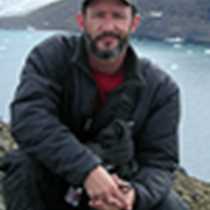At Sea
Our voyage across the Drake Passage would be as smooth going north as it was going south. With just a slight wind for texture but very little swell, National Geographic Explorer plied the waves in great comfort and speed.
Hardly any seabirds were with us as we moved away from Antarctica and towards South America. The ocean life would have been very different when the first Englishman saw it over the bowsprit. Sir Francis Drake made his way around the world from 1577-1580. On September 6, 1577, Drake cleared the Strait of Magellan, but the next day a severe storm struck which drove the Golden Hind as far south as 57°. He reached the place where the Atlantic and Pacific oceans meet. Drake’s nephew, Francis Fletcher, describes their falling in “with the uttermost part of land towards the South Pole without which there is no main nor island to be seen to the Southwards; but the Atlantic Ocean and the South Sea meet in a most large and free scope.” This turbulent place, known today as the Drake Passage, proved that Tierra del Fuego was not part of Terra Australis Incognita, though mapmakers refused to accept this for many years.
What Drake and others launched was an exploitation of the Southern Ocean that would last for centuries. The marine mammal and fish life are still reeling from the efficiency and continued hunting. The Southern Ocean is a vast and forbidding place but it has known the presence of humanity.




